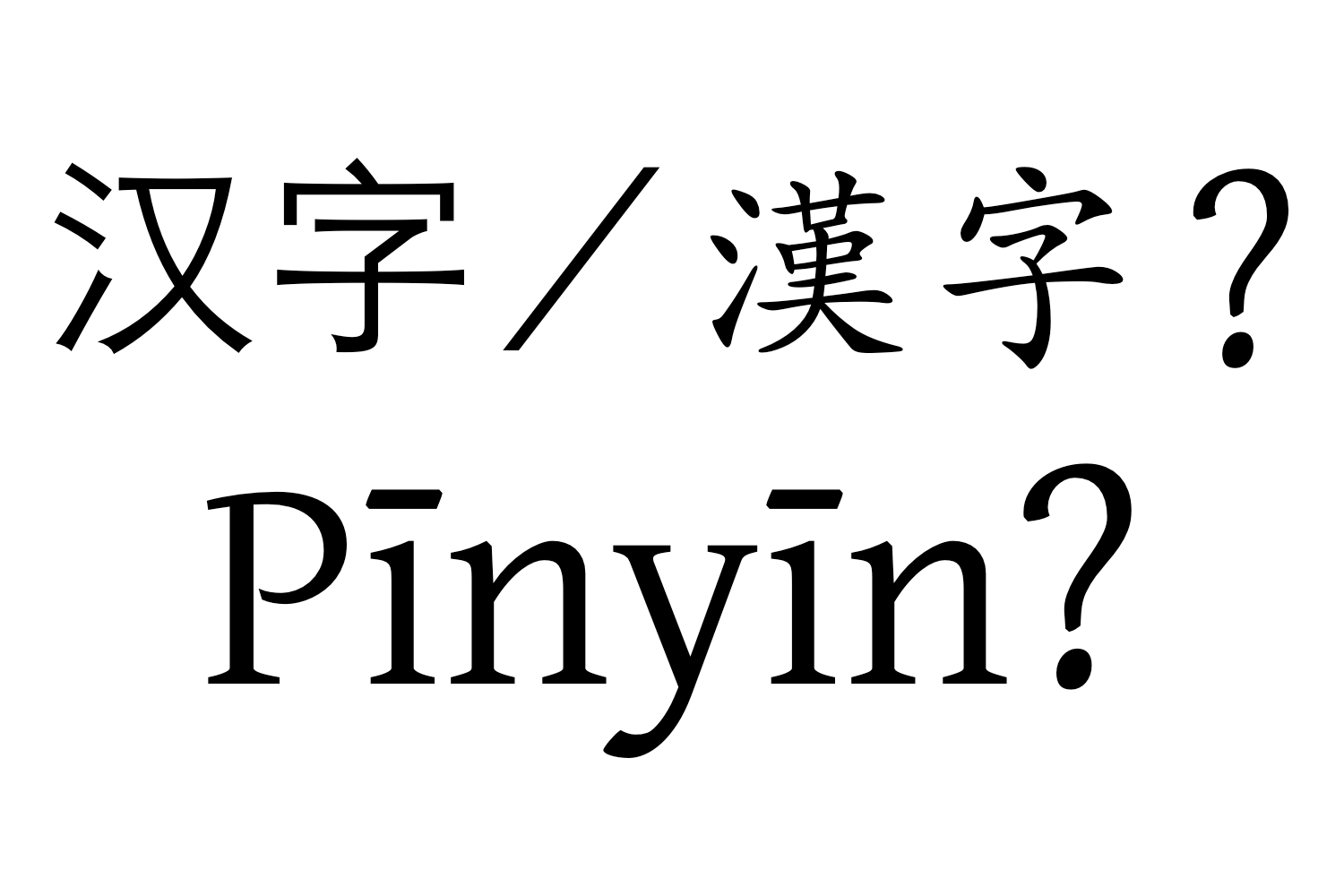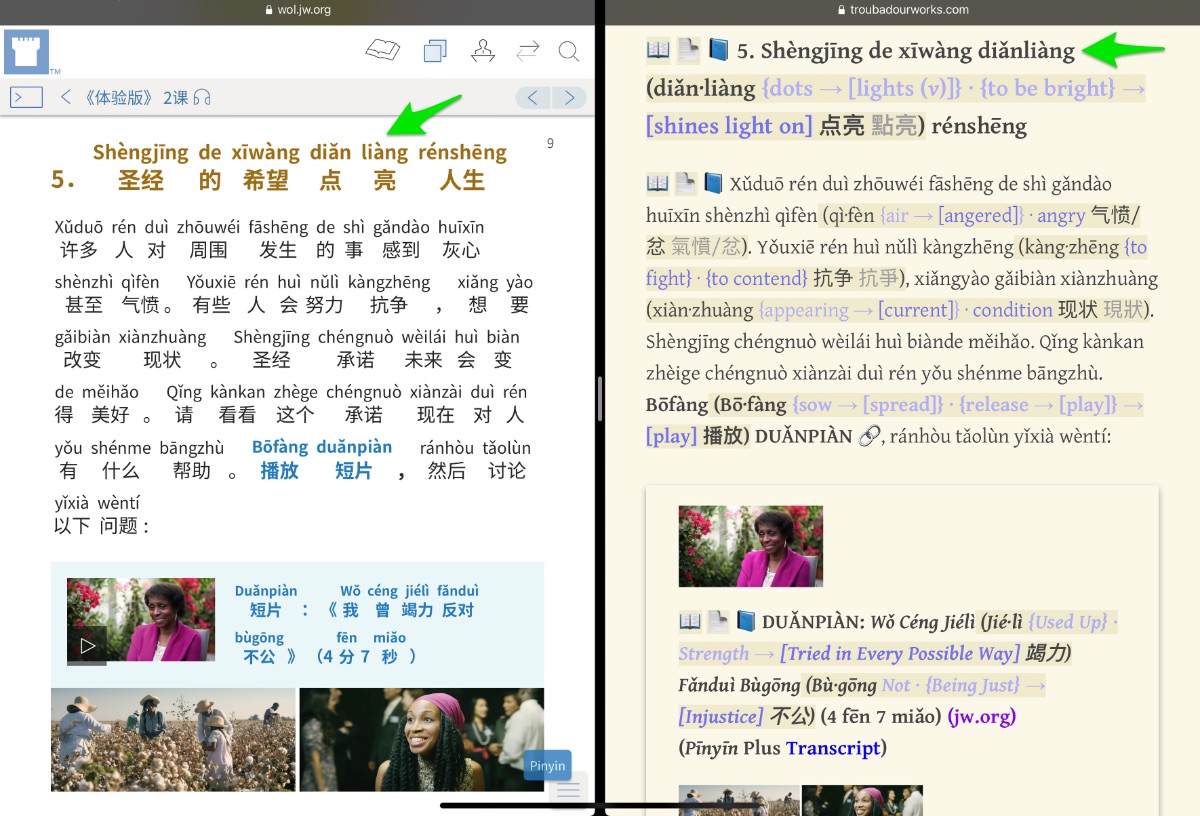kǎlā’OK (karaoke 卡拉OK) ← Tap/click to show/hide the “flashcard”
The selection of this week’s MEotW, “kǎlā’OK (karaoke 卡拉OK)”, was inspired by a Twitter thread of epic linguistic and etymological nerdery that I recently came across, which begins with this tweet:
In this thread I’m going to talk about one of my favorite etymologies. The history of this word has got it all: it’s a fascinating tale of multi-lingual and multi-cultural interaction, full of surprises. I’m excited, let’s go! pic.twitter.com/2JkZ1xNMe7
— zev handel (@ZevHandel) January 29, 2021
Here are some of the tweets in this thread, which summarize how “kǎlā’OK (karaoke 卡拉OK)” became a word in Mandarin:
Our tale begins in reverse chronological order with this rather bizarre-looking written Chinese word:
“卡拉OK”
pronounced kǎlā’ōukēi in Mandarin. (Hang onto your hats, we’ll get to the Japanese source word soon.)
— zev handel (@ZevHandel) January 29, 2021
“卡拉OK” is a fully *phonographic* (purely sound-based) representation of the spoken Mandarin word kǎlā’ōukēi, a four-syllable word with no meaningful sub-parts. The two characters 卡 and 拉 are phonograms. That is, they represent only two meaningless syllables.
— zev handel (@ZevHandel) January 29, 2021
The two letters O and K are also phonograms. They also represent two meaningless syllables. Specifically, they represent the syllables that have the same pronunciation as the Chinese names of the letters. Those Mandarin letter names are borrowed from American English.
— zev handel (@ZevHandel) January 29, 2021
We have to accept the fact that modern Chinese orthography includes roman letters alongside Chinese characters. It’s a writing system that uses two scripts.
— zev handel (@ZevHandel) January 29, 2021
The Mandarin word kǎlā’ōukēi is, of course, a borrowed form of the Japanese word karaoke, most often written entirely in katakana as カラオケ. pic.twitter.com/q5kYZTv2cD
— zev handel (@ZevHandel) January 29, 2021
Well, the word is actually a compound. It’s made up of two meaningful parts combined together. The first part is kara, a native Japanese word that is normally written 空, meaning ‘empty’. pic.twitter.com/6y5VrTzrxb
— zev handel (@ZevHandel) January 29, 2021
Even if you don’t speak Japanese, you probably are familiar with this word kara, though you may not realize it. It’s exactly the same kara as in karate, the Japanese martial art. Karate literally means “empty hand”, because this martial art is practiced without weaponry pic.twitter.com/yqE5HqZGcW
— zev handel (@ZevHandel) January 29, 2021
Okay, so we’ve figured out the first half of karaoke: it’s kara 空 ‘empty’. So what then is oke? pic.twitter.com/OCDe1e7PHn
— zev handel (@ZevHandel) January 29, 2021
The source word is “orchestra”. Borrowing into Japanese as ōkesutora, it was then abbreviated (which is not uncommon for very long borrowings) down to its first two syllables: oke.
— zev handel (@ZevHandel) January 29, 2021
So karaoke is a Japanese hybrid compound, a Frankenstein monster of a word stitched together from two parts with disparate origins.
— zev handel (@ZevHandel) January 29, 2021
The first half is the native Japanese word kara meaning ‘empty’, and the second half is an abbreviation oke of the borrowed English word ōkesutora meaning ‘orchestra’.
— zev handel (@ZevHandel) January 29, 2021
So karaoke literally means “empty orchestra”. Why? Because when you sing karaoke, the song has been metaphorically emptied of its lyrical content, leaving only the instrumental part behind. It’s up to you, the singer, to fill that emptiness.
— zev handel (@ZevHandel) January 29, 2021
One of the most common situations in which a word gets borrowed across languages is when an object or practice is borrowed across cultures. Lacking a word for this new thing, the borrowing cultures readily adopt the word used in the source culture’s language. pic.twitter.com/JN0Wv3AE6s
— zev handel (@ZevHandel) January 29, 2021
So, as the practice of karaoke traveled around the world, propelled by the cultural prominence of Japan in the late 20th century, the Japanese word “karaoke” became English “karaoke” and Mandarin “kǎlā’ōukēi”. pic.twitter.com/Ynjk7wzFJi
— zev handel (@ZevHandel) January 29, 2021
The West gave Japan the orchestra, and then Japan gave the empty orchestra back to the West. The names for these things traveled with them back and forth across the world.
— zev handel (@ZevHandel) January 29, 2021
The Japanese word karaoke was borrowed into Mandarin as kǎlā’ōukēi. In this case, there is no return of a loaned word—there are no Chinese elements lurking in the history of the Japanese word. Once in Chinese, the spoken word is rendered into writing purely phonographically.
— zev handel (@ZevHandel) January 29, 2021
But in an odd twist—a delightful bit of serendipity—the phonograms chosen to represent the four syllables of this word in writing are two Chinese characters and two roman letters. Why two roman letters instead of the characters 歐剋, which have the pronunciations ōu and kēi?
— zev handel (@ZevHandel) January 29, 2021
My guess is that the written form is influenced by the nearly universal prevalence of the English word okay, known to people around the world in the written form “OK”. pic.twitter.com/ssajictf7g
— zev handel (@ZevHandel) January 29, 2021
Why do I call this a delightful bit of serendipity, the sort of thing that gives an etymologist a thrill?
— zev handel (@ZevHandel) January 29, 2021
Because, unbeknownst to either Chinese or English speakers, the part of the Chinese word written with roman letters is *precisely* the part that comes from English: orchestra > ōkesutura > oke > ōukēi.
— zev handel (@ZevHandel) January 29, 2021
Borrowed Culture
In addition to “kǎlā’OK (karaoke 卡拉OK)”, another Mandarin word which borrowed from Japanese culture, which borrowed from Western culture, is “wénhuà (wén·huà {(with) writing} · transformed (system) → [culture] | {(with) writing} · transformed → [cultural] 文化)”, the Mandarin word for culture itself. As the MEotW post about that word says:
To translate the Western concept of culture, the Japanese coined the word bunka, which is written 文化 (see Liu, Zhengtan et al. 1984, s.v. wenhua). The Chinese imported this character combination from Japan and pronounced it according to the rules of their own language: wénhuà.
—“Two Steps Toward Digraphia in China”, by Xieyan Hincha
So, people going on about “pure” Chinese culture are ignorant or in denial about the reality of how other cultures have influenced Chinese culture, and about what a great, enriching thing that can be. Anyone who has been in a group or congregation with people predominantly from a single cultural background, and who has also had the pleasure of being in a group or congregation with people from a variety of cultural backgrounds, has had the opportunity to see how the atmosphere of the latter situation can be a breath of fresh air compared to the relatively narrow—and potentially narrow-minded—cultural worldview that is sometimes allowed to be present in the former situation. Some parts of the world too are starting to realize the advantages of considering various cultural inputs, compared to trying to be productive or creative in a monocultural bubble.
Indeed, the proud “not invented here” logic of Chinese cultural purists who would, for example, reject Pīnyīn (Pīn·yīn {Piecing Together} · Sounds → [Pinyin] 拼音) because it uses letters from the Latin alphabet would also require us to reject things like European-style punctuation, Arabic numerals, and kǎlā’OK (karaoke 卡拉OK) because of their foreign-to-China origins. But, Chinese culture without kǎlā’OK (karaoke 卡拉OK)? How dreary! Next, they’ll be wanting us to do long division using Chinese characters—十一, 九十九, 一千八百三十六, …—instead of Arabic numbers, and they’ll be wanting us to read and decipher Chinese writings the old-fashioned way, without the “crutch” of those decadent European punctuation marks! 😱
(Of course, with kǎlā’OK (karaoke 卡拉OK), as with anything that may involve worldly culture and music—which can possibly include some bad things along with the good things—Christians must be selective, exercising good spiritual judgement and following their Bible-trained consciences.)
As members of the international brotherhood of Jehovah’s people, and as ones “taught by Jehovah” himself, we need not be content with, let alone proud of, a particular way of doing things prescribed by human, worldly Chinese cultural tradition.—1 Peter 5:9; Isaiah 54:13; 1 Corinthians 1:31; 1 John 2:17; Mark 7:1–13.

